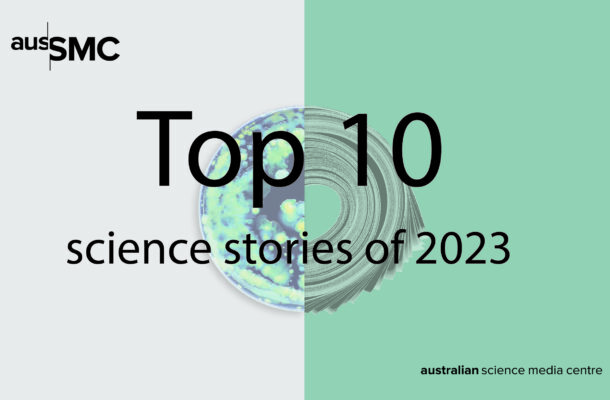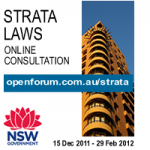The top science stories of 2023

Science hit the headlines in Australia time and again in 2023, as advances in DNA technology freed a mother convicted of murdering her children 20 years ago, we became the first country to legalise psychedelic therapies, the vaping epidemic led to a government crackdown, and we lost, but then thankfully found, a tiny radioactive capsule no larger than a pea.
Some of the biggest global science stories kept us rapt too, as climate change became harder to deny, artificial intelligence (AI) became impossible to ignore, Japan released radioactive wastewater from the Fukushima disaster, NASA published a major UFO report, and scientists announced they’d created synthetic human ’embryos’. The media’s focus on COVID-19 dipped this year as the WHO declared the end of the ’emergency’, but fierce debate about the origins of the disease raged on. Scroll down to read about 2023’s biggest and most important science yarns.

A mother convicted of killing her children was freed by science
After 20 years in prison for the murders of her four children, Kathleen Folbigg was granted a pardon in June following a campaign by 90 scientists around the world, including two Australian Nobel Laureates, which ultimately convinced New South Wales Attorney General Michael Daley that there was reasonable doubt over her guilt, prompting him to issue an unconditional pardon. Scientific advances in the 20 years since her conviction allowed experts to study Folbigg and her children’s DNA, showing that two of them, Sarah and Laura, carried an extremely rare genetic mutation, CALM2-G114R, which can cause sudden heart failure.
The DNA also showed all four children had inherited another genetic mutation, REM2, from their father. The combination made CALM2-G114R much more likely to be lethal. Evidence was also presented that Folbigg’s son Patrick likely died of a different genetic condition, an uncontrolled seizure disorder, which led to his hospitalisation months before his death. With convincing evidence of death by natural causes for three of the four children, Folbigg was freed, and, in November, her case was referred to the Court of Criminal Appeal to consider quashing her convictions. That would allow Folbigg to seek compensation for her time in prison.

AI impressed and alarmed us in equal measure
2023 was the year we witnessed the rise of artificial intelligence (AI), led by a huge surge in the popularity of OpenAI’s nifty ChatGPT (Generative Pre-trained Transformer). ChatGPT is a sophisticated chatbot that generates convincing human-like responses, effectively acing Alan Turing’s famous test of fooling users into believing it, too, is human. ChatGPT impressed with its ability to beat students at their assignments, help save endangered species, dole out reliable heath advice, help scientists write papers, match emergency medics in diagnosing patients, apply reasoning and problem solving as well as we can, fight antivax conspiracy theories, and even provide a more empathetic service than human doctors.
But there were also widespread concerns about the effects of AI on jobs, equality, warfare, online misinformation, creativity, and even the future survival of humanity, leading Australia to consider a ban on high risk uses in June, and to sign the international Bletchley Declaration on AI regulation in November. Separating hype from reality wasn’t easy, but some major figures in AI research were clearly worried, notably Geoffrey Hinton, widely considered the ‘Godfather of AI’, who resigned from Google in May citing concerns about the “existential risk” posed by the technology.

Climate change left us ‘up the proverbial creek’, but not without a paddle
The effects of climate change became a lot harder to deny in 2023, as extreme weather records dropped like flies in a heatwave, and wildfires in Europe, Canada and Hawaii generated international headlines. We learned that greenhouse gases hit record highs again in 2022, trumping the record set in 2021. July and September were the hottest recorded, we sweltered through the hottest week and the hottest day on record, and come November, experts said we’d just lived through the hottest 12-month stretch on record. NASA research showed the extra heat is having an effect on sea ice around Antarctica as it hit a record low in September, beating the previous record by 1.03 million square km, or roughly the size of South Australia.
Worryingly, research released in October suggested it’s now too late to save the West Antarctic Ice Sheet. Concerns were also raised about approaching ‘Day After Tomorrow’ moments for two major ocean currents, the Atlantic Gulf Stream, and its Southern Ocean equivalent. Collapse of these currents would drastically change Earth’s climate. The Intergovernmental Panel on Climate Change (IPCC) Synthesis Report, released in March, warned that immediate and drastic action to cut emissions is needed, and that we’ve likely already missed the boat on limiting warming to 1.5°C.
Despite high profile climate talks scheduled for COP28 this year, political action has not, so far, matched the rhetoric. Researchers said Australia’s climate pledges are among the weakest heading into the meetings, and we’d need to cut emissions at more than 30 times our current rate to meet our obligations under the Paris Agreement. Meanwhile, fossil fuel producers and governments around the world plan to bust the carbon budget required to keep temperature rises to 1.5°C more than twice over by 2030. So, what of that paddle? As fuel prices rocketed internationally, renewable energy hit new highs, with capacity jumping by around a third this year. And in Australia, a record was set in September when almost all of eastern Australia’s demand could have been met by renewables.

Australia became the first country to legalise psychedelic therapies
Since July 1st, authorised psychiatrists in Australia have been legally allowed to prescribe MDMA, commonly known as ecstasy, for post-traumatic stress disorder (PTSD) and psilocybin, the active component of magic mushrooms, for depression, making us the first country in the world to re-schedule these prohibited drugs for therapeutic use.
But this is no ‘Summer of Love’-style free for all – the drugs are only available if all other available treatments have failed, patients will be carefully vetted to ensure the benefits outweigh any risks, and the drugs will never leave the clinic, instead being administered in carefully controlled and supervised psychotherapy sessions with trained professionals. The change in scheduling is based on a growing body of evidence that these psychedelics can help where other treatments have failed, but some Australian psychedelic researchers think the TGA has jumped the gun, and should have waited for more conclusive evidence about long-term outcomes before making these treatments available.

Vaping among kids reached epidemic proportions, and the government cracked down
Initially heralded as an innovation that could save the lives of smokers, the mood turned firmly against vaping in Australia in 2023, as it became clear children could easily get hold of e-cigarettes, use among young Aussies was increasing, and many were developing a dependence on nicotine despite a ban on vape fluids containing the addictive substance. In May, researchers found one potential reason for vaping’s popularity among the young – they watched 264 TikTok videos about vaping and found 98% promoted the habit.
The same month, a government crackdown was announced, which will ban the import and sale of vaping devices and vape fluids. But they’ll remain available on prescription, for smokers trying to quit. The scale of the epidemic was laid bare in September, when research found a quarter of kids aged between 14 and 17 had tried vaping, with most taking their first puff around age 14, and a fifth had vaped in the past 12 months. However, while many experts welcomed the government’s crackdown, some felt it was too draconian, and will lead to a flourishing black market and a resurgence of smoking.

We lost a radioactive capsule but miraculously found it again
If you’re ever having a bad day at work, you can always tell yourself: “At least I’ve never lost a potentially deadly 19-gigabecquerel caesium 137 ceramic source”, after a tiny radioactive capsule belonging to mining company Rio Tinto fell out of a truck transporting it from Western Australia’s Pilbara region to a depot in Perth in January. Although the capsule was sealed, preventing contamination of the desert soil, it will remain radioactive for at least 300 years, prompting concerns an unlucky member of the public might stumble across it and take it home, which has happened before in Peru and twice in China, in Xinzhou and Nanjing.
This type of capsule emits gamma rays and beta rays, so picking it up would cause severe burns and expose you to the equivalent of 10 X-rays per hour. Amazingly, despite being the size of a pea and lost at an unidentified location somewhere along a 1,400km route, specialist search crews using vehicles fitted with radiation detectors had found it by the beginning of February, just two metres from the side of the highway around 200km from the mine site.

Japan released radioactive wastewater from the Fukushima disaster
In a controversial move in August, Japan began releasing more than a million tonnes of treated nuclear wastewater from the Fukushima Daiichi nuclear power plant into the Pacific Ocean, against the backdrop of vociferous objections from China and the Japanese fishing industry. The release followed approval by the International Atomic Energy Agency (IAEA) in July. The agency said the water, used to cool fuel rods that melted after the plant was hit by an earthquake and tsunami in 2011, had been stripped of radioactivity by specialised processing, apart from tritium, a radioactive form of hydrogen that’s hard to remove.
Dilution with seawater brings the tritium concentration down to one 40th of the levels permitted under Japanese safety standards, and the water will be released over the next 30 to 40 years via an underwater tunnel 1km from the coast. However, concerns remained, particularly among Japan’s lucrative seafood industry following import bans by China. But experts pointed out that one bite of a banana contains the same level of radioactivity as the tritium in a lifetime’s worth of seafood caught a few kilometres from the ocean outlet.

COVID-19 was an ‘emergency’ no more, but debate about its origins raged on
In May, the World Health Organization (WHO) officially declared that COVID-19 is no longer a ‘global health emergency’, but warned that the virus ‘remains a global health threat’. Then, in October, our Chief Medical Officer declared that COVID-19 is no longer a Communicable Disease Incident of National Significance (CDINS) in Australia. So, can we all relax? Perhaps only if we’re fully vaxxed. Lingering symptoms are still affecting many and a government inquiry into long COVID found the condition is poorly defined and understood.
Australian Bureau of Statistics (ABS) data released in September showed COVID-19 was the first infectious disease in the top five causes of death in Australia since 1970, responsible for around one in 20 deaths in 2022. We’re still expecting waves of COVID-19 over the next few years, but recently emerging variants don’t appear to be more dangerous than Omicron. Meanwhile, debate raged on about the origins of COVID-19 – did it arise naturally or was it created by Chinese ‘gain of function’ research and then escaped from a lab in Wuhan, where the disease first appeared? While the jury is still out on that, there are a number of lines of evidence that are swaying most virologists towards an animal origin.

Scientists announced the creation of synthetic human embryos
In June, UK scientists hit the headlines after announcing at a conference that they’d created synthetic human ‘embryo models’ using stem cells, bypassing the usual need for eggs or sperm. This was one of two teams that then published preprint papers outlining their work to grow embryo-like structures. But there’s no prospect of synthetic bubs, at least not yet – these lab-grown embryo models include cells that would typically go on to form the placenta, yolk sac and the embryo itself, but they don’t have a beating heart or a brain. And creating synthetic people was never the aim of the work, which is intended to help us understand the early stages of human development, inherited diseases, and recurring miscarriage.
Synthetic embryos could allow scientists to study the ‘black box’ period of development which occurs after two weeks, when research on regular human embryos has to stop. The researchers reported growing their synthetic embryo models beyond this two-week period. However, some scientists remain sceptical about whether the work really represents a ‘breakthrough’, pointing to similar previous research, and questions remain about the regulation of synthetic embryo research, and whether synthetic embryo models could ever potentially grow into synthetic people, even if regulations allowed.

NASA released a major report on UFOs and appointed a UFO Research Chief
In September, NASA released a highly anticipated report about unidentified aerial phenomena (UAP), or UFOs to you and me, and the results were as mysterious as little green men. So, is the truth now out there? After poring over hundreds of UAP sightings, NASA said there’s no evidence aliens were behind the unexplained phenomena, but stopped short of ruling them out, admitting the possibility of “unknown alien technology operating in Earth’s atmosphere”.
So, why no conclusive answer? NASA said there’s just not enough reliable data about these sightings, so it has appointed a new director of UAP research and hopes to deploy an army of citizen scientists to gather and analyse accounts of any close encounters. The public will be asked to phone home to report sightings via smartphone apps, which NASA hopes will help build a database of more reliable information. Flying saucer fans were also treated to a congressional hearing on UFOs in the USA this year, when three former military officials made some pretty wild claims, including that the US government has a secret stash of UFOs and alien bodies. But if they’re anything like the ‘alien mummies’ presented by a self-proclaimed UFO expert to Mexican politicians in September, it’s probably safe to remain sceptical for now.
Open Forum is a policy discussion website produced by Global Access Partners – Australia’s Institute for Active Policy. We welcome contributions and invite you to submit a blog to the editor and follow us on Twitter, Facebook, Linkedin and Mastadon.













